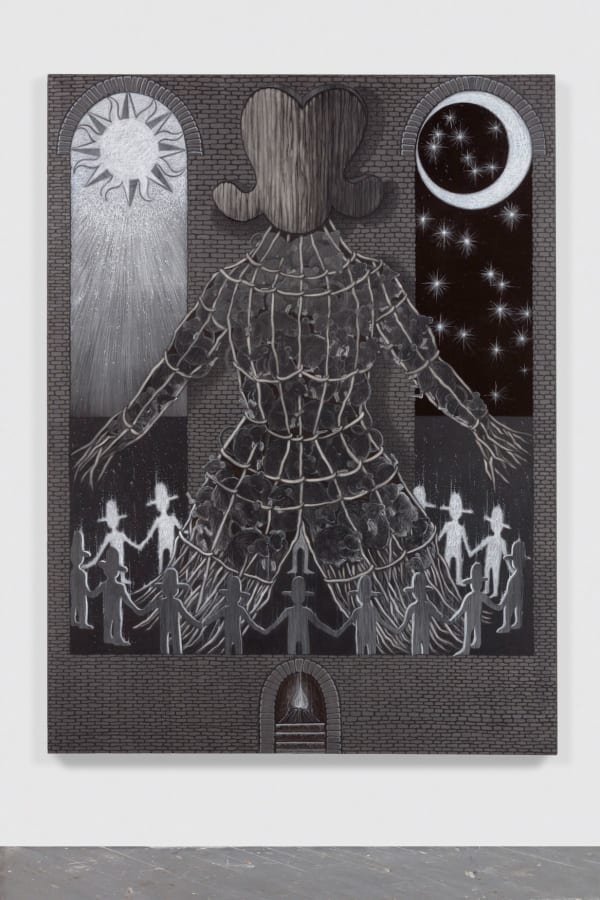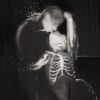Cindy Ji Hye Kim: The Sword Without, The Famine Within
This story could be called ‘The Statues.’ Another possible name is ‘The Murder.’ And also ‘How to Kill Cockroaches.’ So I will tell at least three stories, all true because they don’t contradict each other.
Clarice Lispector, The Statues
There are no cockroaches or statues in Cindy Ji Hye Kim’s The Sword Without, The Famine Within, yet both Lispector’s short story and Kim’s own work converge on remarkably similar meta-fictions. Lispector’s protagonist kills cockroaches with a paste of nutrients and plaster, mummifying them from the inside out and turning their inert bodies into prisms that refract the story into countless potential narratives. For Kim, one and a half sticks of charcoal, a quarter-pound of Van Dyke brown and a half-pound of iron oxide and graphite, crushed and broken into the canvas, serve the same function as the poisoned bait: an act of lethal ossification by which corpses stabilize into a new alphabet that endows the community with a rejuvenated capacity for writing stories.
Kim’s paintings are not acts of spontaneous generation, manifestations ex-nihilo from within the imagination, but a sacred place of destruction. Creation, healing, regeneration only takes place in the acts of interpretation that emerge from the ashes as a new mythology. The making of the work, both the painstaking labor and the expenditure of raw material, is always a sacrifice of the artist’s inherently finite means; the work itself is simply a way of concretizing otherwise invisible affects among the group and opening up repressed wounds in the service of catharsis.
There is always, as such, a deep negation in craftsmanship. But while the artist doesn’t control the evolutions of meaning that happen around their act of self-mutilation, they nonetheless have chosen the kind of catalyst into which they shape their pound of flesh. Neither artists nor works of art are vessels that “contain” meanings: they are surfaces through which narratives burn. An idea only “means” something insofar that we vote with our feet and pay a price, and to create new significations requires that we immolate the very structures that circumscribe our identities.
At the end of the day, one must submit to the tactile throw of the die—how could any of this simply make “sense” on its own? To grope for content “inside”, for an alleged “truth” beyond the relentless unfoldings of our volition, would be to suppose ourselves hollow, heads filled with the very kindling and wicker that burns the beasts we prepare for slaughter.
Of what profit is an idol when carved by a craftsman; a metal image, a teacher of lies? For its maker trusts in his own creation when he makes a speechless God.
Habakkuk 2:18
Alexander Boland, 2019
Cindy Ji Hye Kim (b. 1990, Incheon, South Korea) lives and works in New York City. She earned an MFA from Yale School of Art in 2016 and a BFA from the Rhode Island School of Design in 2013. Recent solo exhibitions include The Sow is Mine, Cooper Cole, Toronto (2018); The Celebate Machine, Interstate Projects, New York (2018); and Tick, Helena Anrather, New York (2017), and her works have appeared in numerous group shows including at Unclebrother, Hancock, New York (2018); Foxy Production, New York (2018); Arsenal Contemporary, New York (2018); and DC Moore Gallery, New York (2017). Coverage of her practice has appeared int he pages of the New York Times, The New Yorker, Art in America, and Paper Magazine, among others. The Sword Without, The Famine Within is Kim’s first solo exhibition in Los Angeles.







